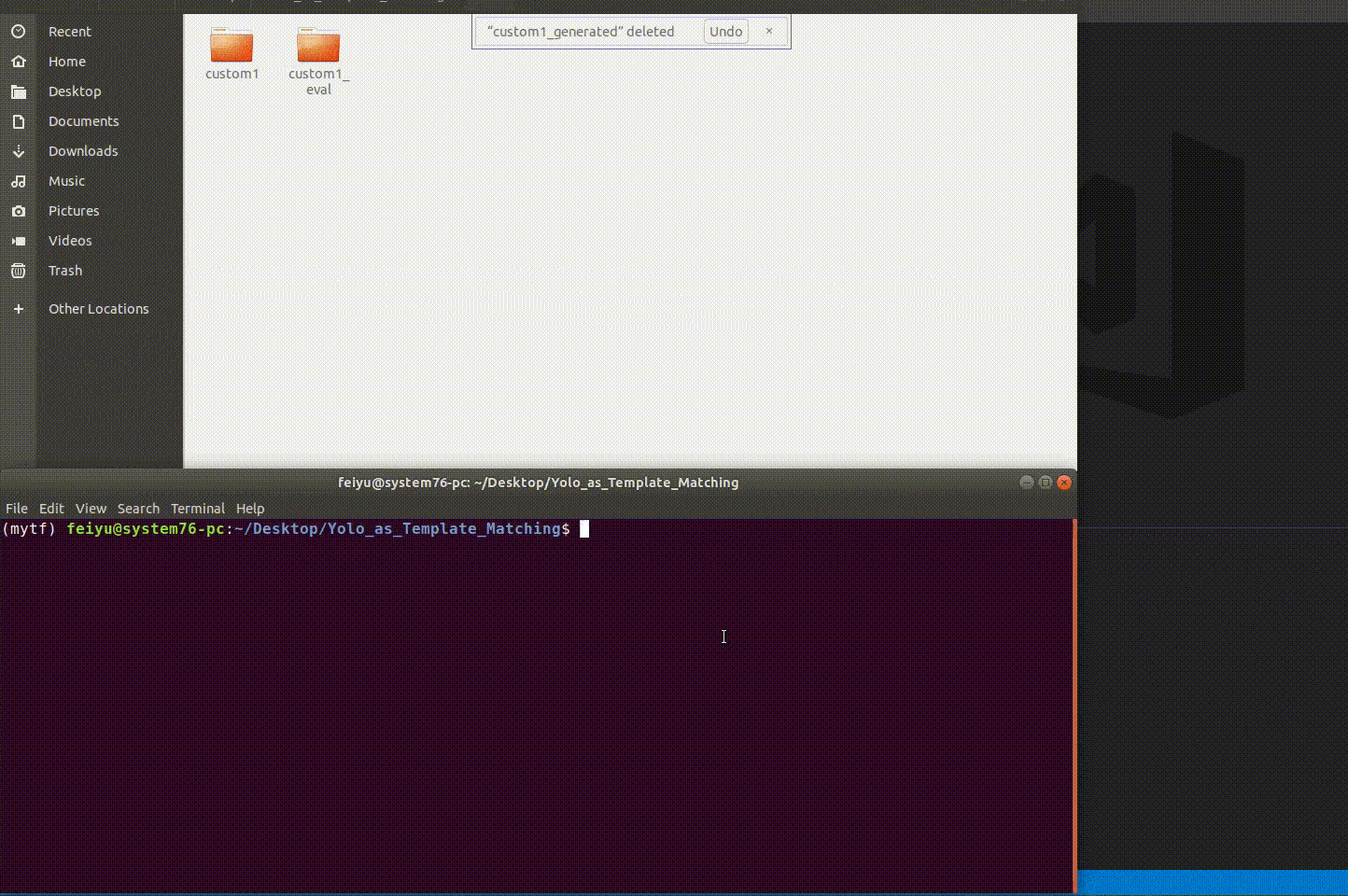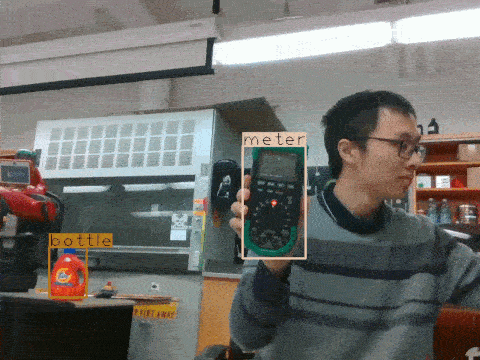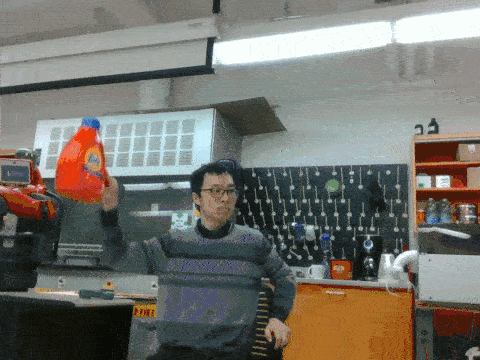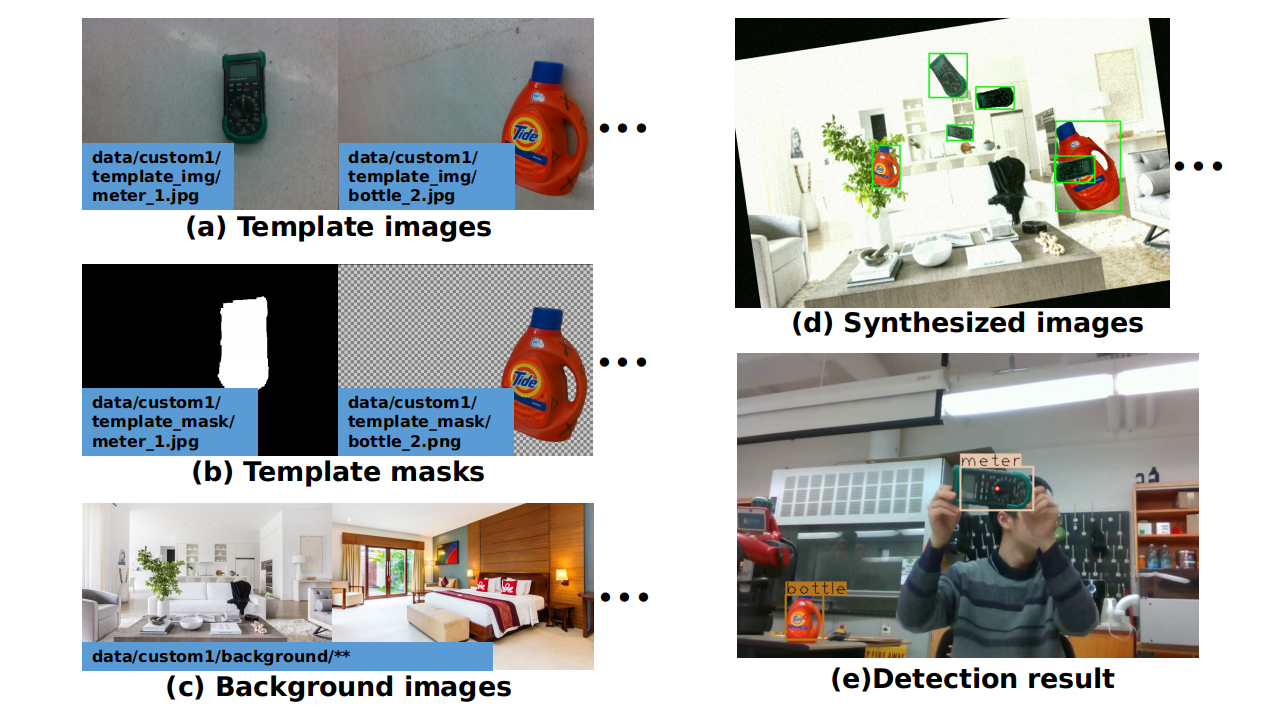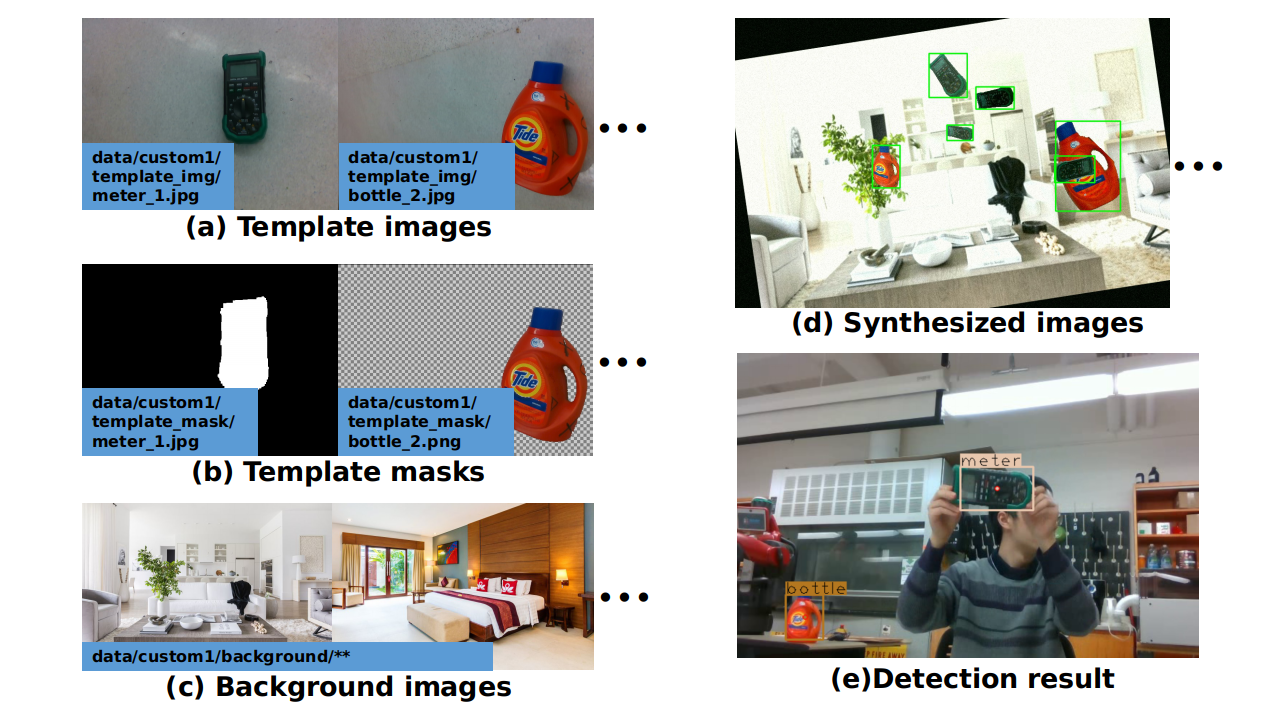felixchenfy / Ros_yolo_as_template_matching
Programming Languages
Projects that are alternatives of or similar to Ros yolo as template matching
Yolo as Template Matching
1. Introduction
Abstract:
Run 3 simple scripts to (1) augment data (by putting few template images onto backgrounds), (2) train YOLOv3, and (3) achieve object detection.
It's named Template Matching because only a few template images are used for training.
Support:
- Language: Python 2 or 3; ROS or not ROS.
- Data source for inference: (1) An image; (2) A folder of images; (3) A video file. (4) Webcam. (5) ROS topic.
Demo of Object detection:
The training data of the above data are:
(1) 4 template images.
(2) 25 background images(homes) downloaded directly from google.
By putting templates onto backgrounds, 3000 synthsized images were created, and then traiend for 500 epochs. The workflow is shown below.
Reference: The core code of Yolo is copied from this repo, and is stored in src/PyTorch_YOLOv3, with slight modifications.
2. Download Weights and Install Dependencies
For dependencies, see this file doc/dependencies.md.
Download my pretrained weights file for two classes (bottle and meter) from here and put it as weights/yolo_trained.pth. Then, you can run all the test cases in the next section.
3. Tests
The commands for testing are listed here.
3.1. Synthesize images and set up YOLO files
bash s1_main_setup.sh # synthesize images and set up yolo files
which is:
python main_setup.py \
--config_file config/config.yaml \
--verify_mask True \
--augment_imgs True \
--setup_train_test_txt True \
--setup_yolo True
The inputs are config/ and data/custom1/; The outputs are the synthesized images and YOLO configurations files in data/custom1_generated/.
3.2. Train
bash s2_train.sh # train yolo
which is:
WEIGHTS_FILE="weights/yolo_trained.pth"
python src/train.py \
--config_file config/config.yaml \
--epochs 1000 \
--learning_rate 0.0005 \
--checkpoint_interval 20 \
--pretrained_weights $WEIGHTS_FILE \
--batch_size 2
The trained models will be saved to: checkpoints/$TIME_OF_TRAINING/
3.3. Inference one image
bash s4_inference_one_image.sh # detecting objects from an image
which is:
python src/detect_one_image.py \
--config_path "config/config.yaml" \
--weights_path "weights/yolo_trained.pth" \
--image_filename "test_data/images/00011.png"
3.4. Inference multiple images from webcam, folder, or video file
bash s3_inference_images.sh # detecting objects from webcam, folder, or video.
which is:
# -- 1. Select one of the 3 data sources by commenting out the other two
# src_data_type="webcam"
# image_data_path="none"
# src_data_type="folder"
# image_data_path="test_data/images/"
src_data_type="video"
image_data_path="test_data/video.avi"
# -- 2. Detect
python src/detect_images.py \
--config_path "config/config.yaml" \
--weights_path "weights/yolo_trained.pth" \
--src_data_type $src_data_type \
--image_data_path $image_data_path
3.5. Inference image from ROS topic
Download ROS images publisher:
cd ~/catkin_ws/src
git clone https://github.com/felixchenfy/ros_images_publisher
Publish testing images:
ROOT=$(rospack find ros_yolo_as_template_matching)
rosrun ros_images_publisher publish_images.py \
--images_folder $ROOT/test_data/images/ \
--topic_name test_data/color \
--publish_rate 5
Start YOLO detection server:
ROOT=$(rospack find ros_yolo_as_template_matching)
rosrun ros_yolo_as_template_matching ros_server.py \
--config_path $ROOT/config/config.yaml \
--weights_path $ROOT/weights/yolo_trained.pth \
--src_topic_img test_data/color \
--dst_topic_img yolo/image \
--dst_topic_res yolo/results # See `msg/DetectionResults.msg`
You can view the result on this topic yolo/image by tools like rqt_image_view.
4. Train Your Own Model
4.1. Configuration file
In config/config.yaml, set the "data_name" and "labels" to yours.
data_name: "custom1" # Your data folder will be "data/custom1/"
labels: ["bottle", "meter"] # class names of the target objects
Set the "template_aug_effects" to meet your need.
The other settings are also illustrated in that yaml file.
4.2. Training data
Create a folder "data/$data_name/", such as "data/custom1/". Create the following subfolders:
data/custom1
├── background
├── template_img
└── template_mask
4.2.1. template_img
Put your template images into data/custom1/template_img/ with a name of "name_index" and suffix of ".jpg" or ".png".
template_img/
├── bottle_1.jpg
├── bottle_2.jpg
├── meter_1.jpg
└── meter_2.jpg
For example, meter_1.jpg as shown in figure (a) below.
4.2.2. template_mask
Copy the above images to data/custom1/template_mask/. Use image editing tool to mask them as shown in figure (b) above.
Format 1: Color/Gray image, where white is the object.
Format 2: Image with transparency channel (a 4-channel image). The non-transparent region is the object.
template_mask/
├── bottle_1.png
├── bottle_2.png
├── meter_1.jpg
└── meter_2.png
4.2.3. background
I downloaded 25 images from google by using googleimagesdownload and the command:
$ googleimagesdownload --keywords "room images" --limit 25
Copy these background images into data/custom1/template_mask/
It'll be better to add the background images of your own scenes, which increases the detection precision.
4.3. Synthesize images and setup yolo
Run:
$ bash s1_main_setup.sh
This will create following staffs:
data/custom1_generated/
├── classes.names # yolo
├── images/ # yolo
├── images_with_bbox/ # for your verification
├── labels/ # yolo
├── masked_template/ # for your verification
├── train.txt # yolo
├── valid_images/ # copied images for you to test
├── valid.txt # yolo
├── yolo.cfg # yolo
└── yolo.data # yolo
If you think the synthesized data are not enough and want to add more labeled data, you can put them into the data/custom1_generated/images and data/custom1_generated/labels folder, and then update the yolo files by:
$ python main_setup.py --setup_yolo True
4.4. Train Yolo
Download the weights file from here:
$ cd weights/
$ wget -c https://pjreddie.com/media/files/darknet53.conv.74
Put it to weights/darknet53.conv.74. Then, start training:
WEIGHTS_FILE="weights/darknet53.conv.74"
python src/train.py \
--config_file config/config.yaml \
--epochs 1000 \
--learning_rate 0.0005 \
--checkpoint_interval 20 \
--pretrained_weights $WEIGHTS_FILE \
--batch_size 2
The checkpoints are saved to the checkpoints/ folder.
5. Reference
https://github.com/eriklindernoren/PyTorch-YOLOv3
6. Trouble shooting
- ImportError: bad magic number in 'config': b'\x03\xf3\r\n'
$ find . -name *.pyc -delete

